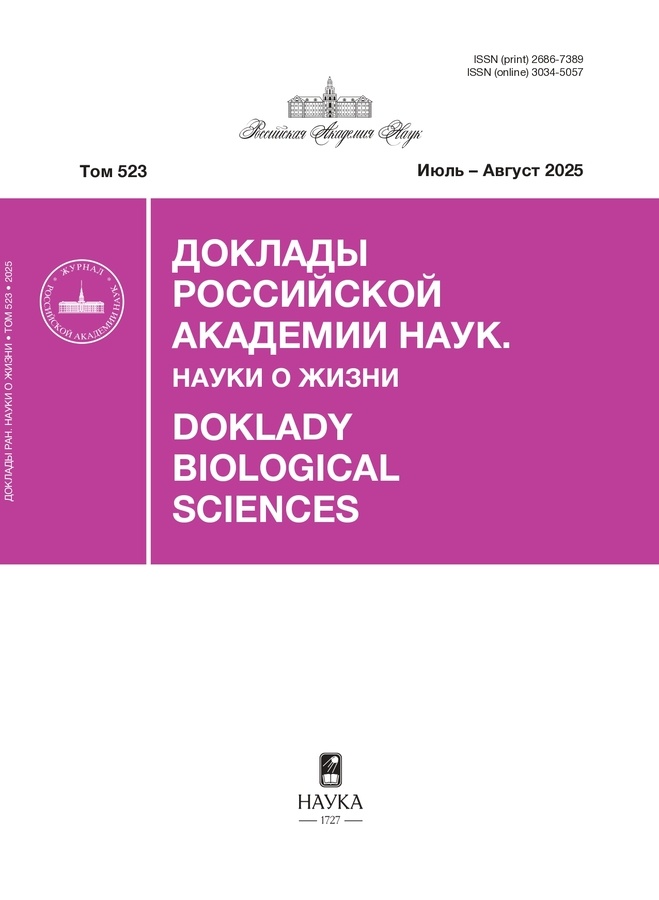Neuronal and muscle differentiation of mammalian cells is accompanied by a change of PHF10 isoform expression
- Authors: Bayramova D.O.1,2, Azieva A.M.3, Feoktistov A.V.1,2, Georgieva S.G.1, Soshnikova N.V.1,2
-
Affiliations:
- Department of Transcription Factors, Engelhardt Institute of Molecular Biology, Russian Academy of Sciences
- Engelhardt Institute of Molecular Biology, Russian Academy of Sciences
- National Research Center "Kurchatov Institute"
- Issue: Vol 514, No 1 (2024)
- Pages: 96-100
- Section: Articles
- URL: https://ruspoj.com/2686-7389/article/view/651473
- DOI: https://doi.org/10.31857/S2686738924010189
- EDN: https://elibrary.ru/KHXBYO
- ID: 651473
Cite item
Abstract
The PBAF chromatin remodeling complex of the SWI/SNF family plays a critical role in the regulation of gene expression during tissue differentiation and organism development. The subunits of the PBAF complex have domains responsible for binding to N-terminal histone sequences. It determines the specificity of binding of the complex to chromatin. PHF10, a specific subunit of the PBAF complex, contains a DPF domain, which is a unique chromatin interaction domain. A PHF10 isoform that lacks the DPF domain is also present in vertebrate cells. This work shows that during neuronal and muscle differentiation of human and mouse cells, the expression of PHF10 isoforms changes: the form that does not have DPF replaces the form in which it is present. Replacement of PHF10 isoforms in the PBAF complex may affect its selectivity in the regulation of genes in differentiating cells.
Keywords
Full Text
About the authors
D. O. Bayramova
Department of Transcription Factors, Engelhardt Institute of Molecular Biology, Russian Academy of Sciences; Engelhardt Institute of Molecular Biology, Russian Academy of Sciences
Email: so2615@gmail.com
Russian Federation, Moscow; Moscow
A. M. Azieva
National Research Center "Kurchatov Institute"
Email: so2615@gmail.com
Russian Federation, Moscow
A. V. Feoktistov
Department of Transcription Factors, Engelhardt Institute of Molecular Biology, Russian Academy of Sciences; Engelhardt Institute of Molecular Biology, Russian Academy of Sciences
Email: so2615@gmail.com
Russian Federation, Moscow; Moscow
S. G. Georgieva
Department of Transcription Factors, Engelhardt Institute of Molecular Biology, Russian Academy of Sciences
Email: so2615@gmail.com
Academician of the RAS
Russian Federation, MoscowN. V. Soshnikova
Department of Transcription Factors, Engelhardt Institute of Molecular Biology, Russian Academy of Sciences; Engelhardt Institute of Molecular Biology, Russian Academy of Sciences
Author for correspondence.
Email: so2615@gmail.com
Russian Federation, Moscow; Moscow
References
- Moshkin Y. M., et al. // Mol Cell Biol. 2012. V. 32. № 3. P. 675–688.
- Sokpor G., et al. // Front Mol Neurosci. 2017. V. 10. P. 243.
- Centore R. S., et al // Trends Genet. 2020. V. 36. № 12. P. 936–950.
- Singh A., et al. // Cell Biochem Biophys. 2023. V. 81. № 2. P. 167–187.
- Krasteva V., et al. // Exp Hematol. 2017. V. 48. P. 58–71.
- Brechalov A. V., et al. // Cell Cycle. 2014. V. 13 № 12. P. 1970–1979.
- Soshnikova N. V., et al. // Acta Naturae. 2020. V. 12. № 4. P. 57–65.
- Chugunov A. O., et al. // Int J Mol Sci. 2021. V. 22. № 20.
- Regadas I., et al. // Mol Cell. 2021. Vol. 81. № 8. P. 1766–1780.
- Viryasova G. M., et al .// Biochim Biophys Acta Mol Cell Res. 2019. V. 1866. № 12. P. 118525.
- Lessard J., et al // Neuron. 2007. V. 55. № 2. P. 201–215.
- Banga S. S., et al. // Cytogenet Genome Res. 2009. V. 126. № 3. P. 227–242.
- Tatarskiy V. V.et al. // Sci Rep. 2017. V. 7. № 1. P. 5645.
- GTEx Consortium // Nat Genet. 2013. V. 45. № 6. P. 580–585.
- Jing L., et al. // Bio Protoc. 2012. V. 2. № 10.
Supplementary files














